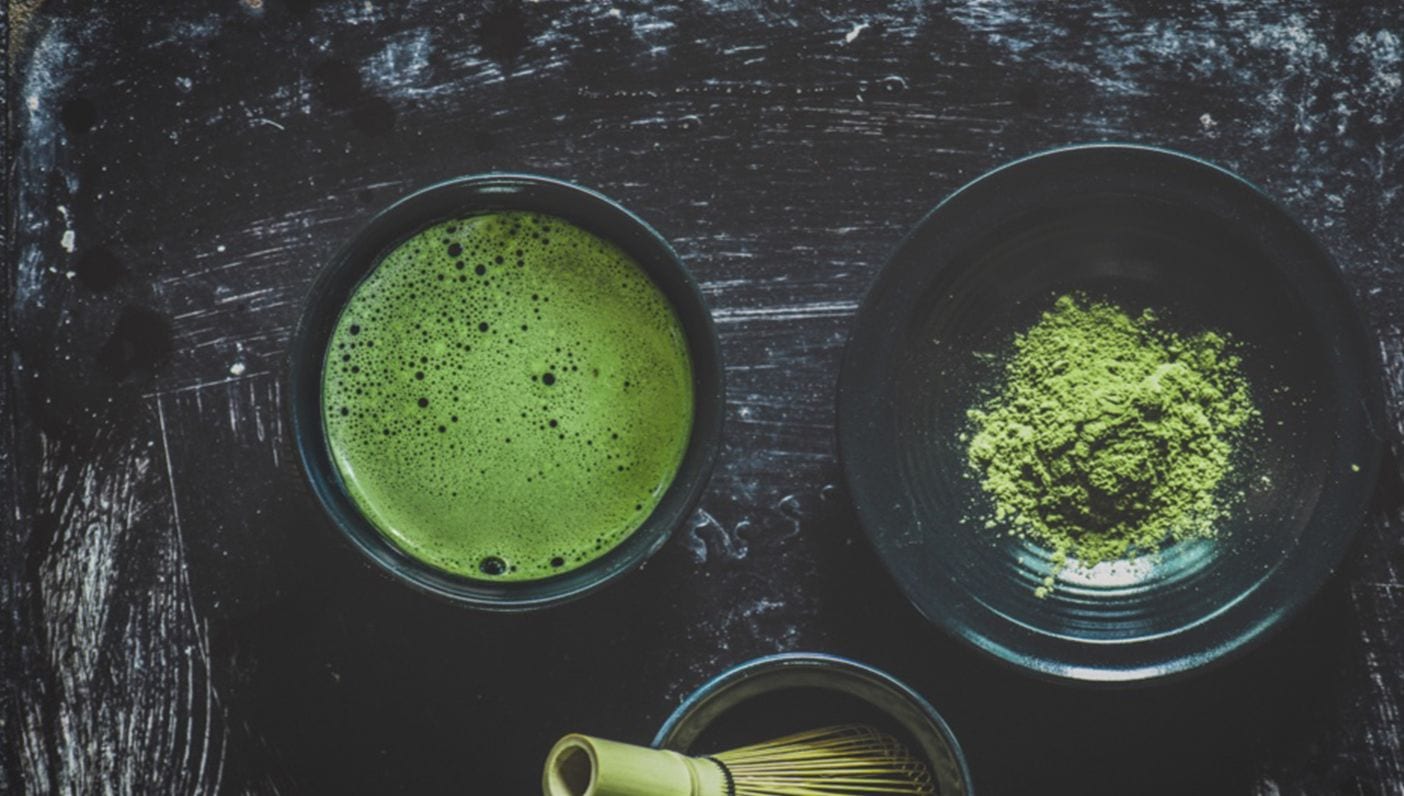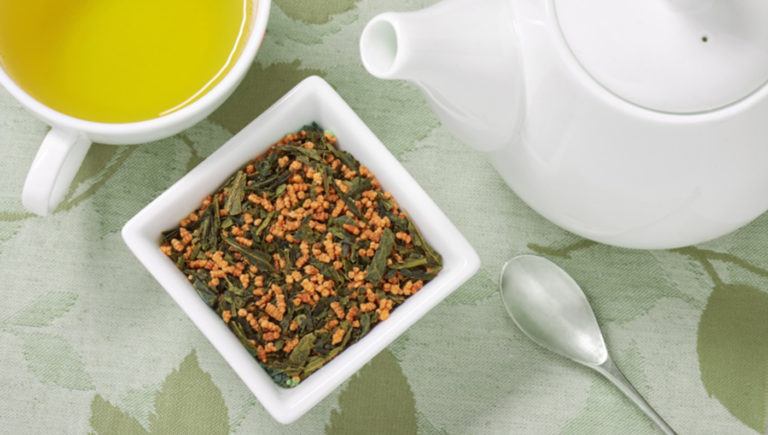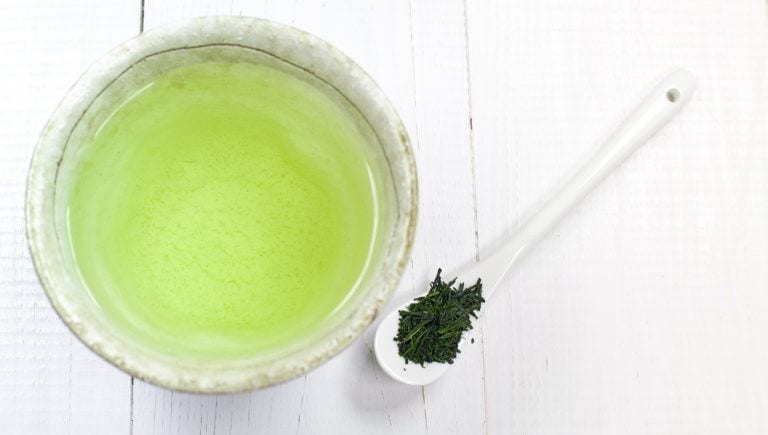
It’s no secret that green tea is good for you. Everyone from your grandma to your yoga teacher to the internet has likely raved about the amazing benefits of this powerful infusion. But have you ever considered tailoring your green tea regimen to your body’s internal clock?
With so many different types of green tea out there, you can use each cup as a way to recalibrate and calm your mind and body based on what they need, when they need it. We believe the teatime practice should be so much more than grabbing a bag, steeping, and sipping. Your personal tea ritual can serve as a form of self-care, or a method of tuning into your body’s needs. The key to doing this is to integrate a green tea ritual into your everyday routine. Here’s how to get started.

First, choose your tea.
Much like coffee or kombucha, there are several different types of Japanese green tea. It’s the daily elixir of Japan, and thus there are a myriad of ways to enjoy its many benefits. Are you a Matcha or a Sencha type of gal? Genmaicha? Maybe you’re all of the above, depending on the time of day. Here are the types and flavors you need to know:
Bancha: low caffeine; sweet, nutty; may be enjoyed hot or cold
A favorite among the Japanese, Bancha tea leaves are harvested in the late summer and later roasted, giving it a sweet, yet bold flavor profile. If you are sensitive to caffeine, Bancha is likely your best bet—its low caffeine levels make it slightly energizing while simultaneously soothing.
Genmaicha: low caffeine; rich and earthy
Each cup of Genmaicha packs a healthy dose of theanine, a naturally occurring amino acid. Also known as the “feel-good” amino acid, theanine helps calm anxiety and bring peace to a worried mind.
Gyokuro: high caffeine; sweet, umami flavor
The finest grade of all Japanese green teas, Gyokuro is an elegant tea carefully made using the ooishita method, which shades young tea leaves from sunlight in order to boost theanine levels. This tea is ideal for reducing stress while still providing the perfect amount of energy.
Hojicha: low caffeine; woodsy, caramelized flavor
Hojicha is roasted at very high heat, which depletes the leaves’ caffeine, making an ideal sleepy time tea, or for when you need to relax after a long day at work. We personally love it following evening meditation or a star-laden yoga class.
Matcha: high caffeine; umami, delicately sweet flavors
Perhaps the most popular of the Japanese green teas, matcha is made from young, shade-grown tea leaves, which are harvested, steamed and ground into fine powder. It’s known to help facilitate mental focus without making the mind race.
Sencha: mild caffeine; grassy, fresh flavor
The most ubiquitous of all Japanese green teas is Sencha. Harvested in the spring, Sencha leaves are steamed and rubbed to produce a lively, golden yellow tea. With a moderate level of caffeine, this tea is incredibly approachable and ideal for calming a worried mind.
Next, choose your time of day.
Now it’s time to really think about how your body feels throughout the day. What time do you need your caffeine boost? First thing in the morning, 3pm, after work? Matcha and Gyokuro would be great options to incorporate around the times you’re feeling sluggish and need a little more gas in the tank. What about when you’re ready to wind down at night? Bancha or Hojicha will calm your mind and send you to bed primed for dreamland. And what about for those moments in between? Do you feel particularly panicked or stressed at certain points of the day? Genmaicha and Sencha are great to help put your mind at ease and soothe any stress.
Identifying patterns throughout your day will help inform which tea to have and when. In Japan, it’s common to have several cups of tea a day, with it being customary to have a cup after each meal. When tailoring your own schedule, find times to carve out where you can really honor the ritual of your teatime. It’s a sacred opportunity to sip slowly, savor the flavor, and celebrate yourself.

Finally, select an activity.
Simply preparing and drinking your tea with love and intention is a ritual in and of itself. The practice can be so much more than ripping open a paper packet and dunking the tea bag into a cup—there are numerous ways to prep your precious tea. For matcha, you can whisk everything together or you can blend it up, adding any extra sweeteners or adaptogens your heart desires. For any of the loose leaf teas, you can use a french press or a glass teapot with a strainer. Consider investing in a kyusu or ceramic teapot and cup that you only use for your green tea. This will help separate the practice from the rest of your daily routine and make it feel a bit more sacred.
After you’ve made your tea, consider elevating the experience with a feel-good wellness activity. Whether it’s pranayama breathing, gratitude journaling, running a bath, or sitting outside and watching nature, try out what feels good to you. Pay special attention to the activities that really help clear your headspace of any pressure or worry. Everything will still be there when you’re done. Remember to let this time just be yours.

Add your ritual to your daily routine.
Once you know your ideal routine, it’s time to implement it. Start small, maybe just one cup a day, and see how you feel. After three to five days, you can see about adding a second cup at another time of the day, and so on. Remember to carefully think about how you’re feeling at each point and don’t be afraid to modify the routine as you go. Every day will welcome new feelings, and having this time carved out for yourself will help equip you with the mental steadiness to keep on rolling, no matter what life throws at you.
For more information on tools and types of teas, or to start stocking up on your own personal teatime inventory, visit Japanese Green Tea online.
In partnership with Japanese Green Tea
Steeped in Zen tradition, Japanese Green Tea inspires you to be present, mindful, and please all your senses with the wonder of simplicity, heat, scent and flavor. Learn the secret many Japanese people credit for long life and a sense of calm — Japanese Green Tea, an elixir rich in flavonoids, including the antioxidants catechin and theanine, the calming amino acids more prevalent in green teas from Japan.